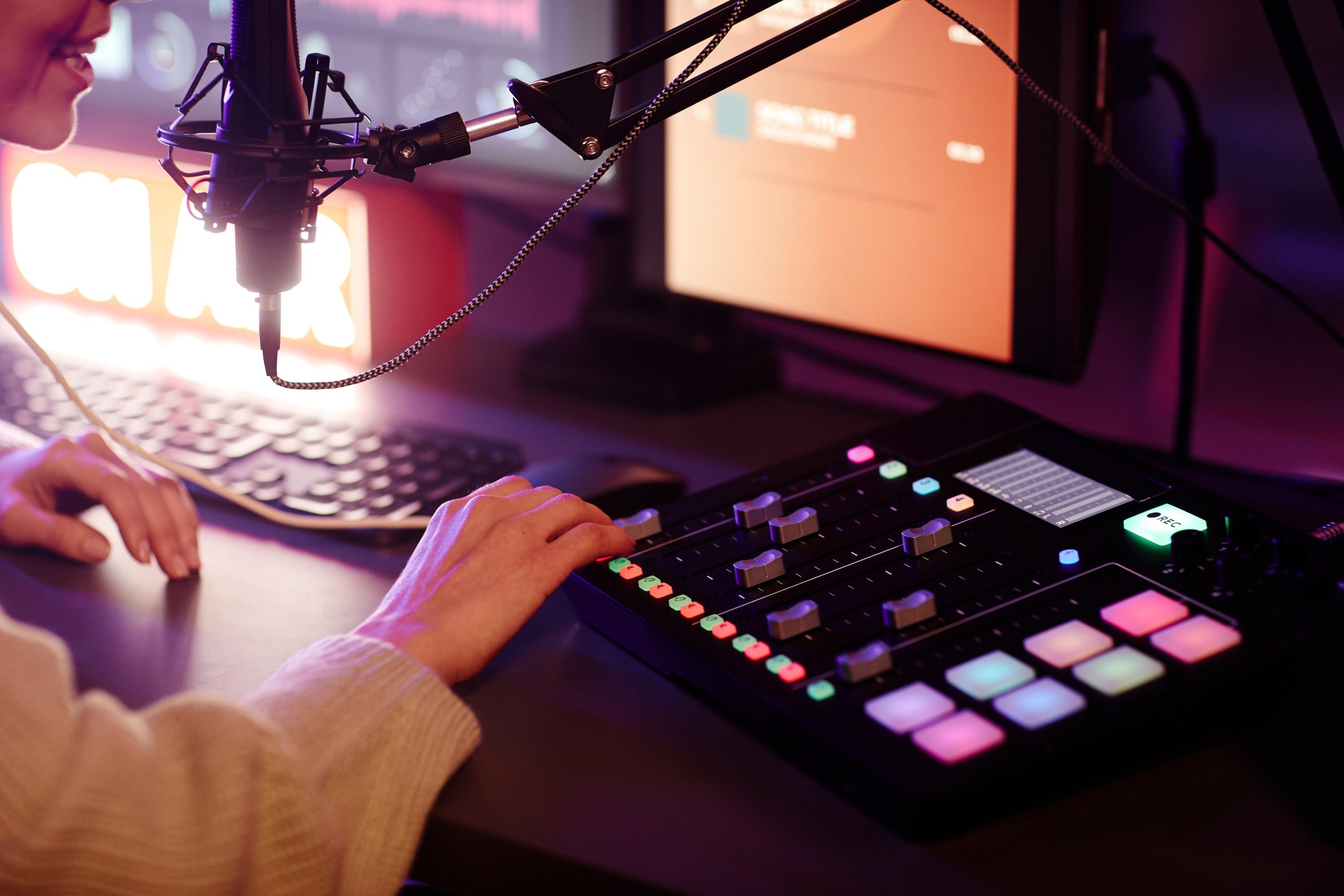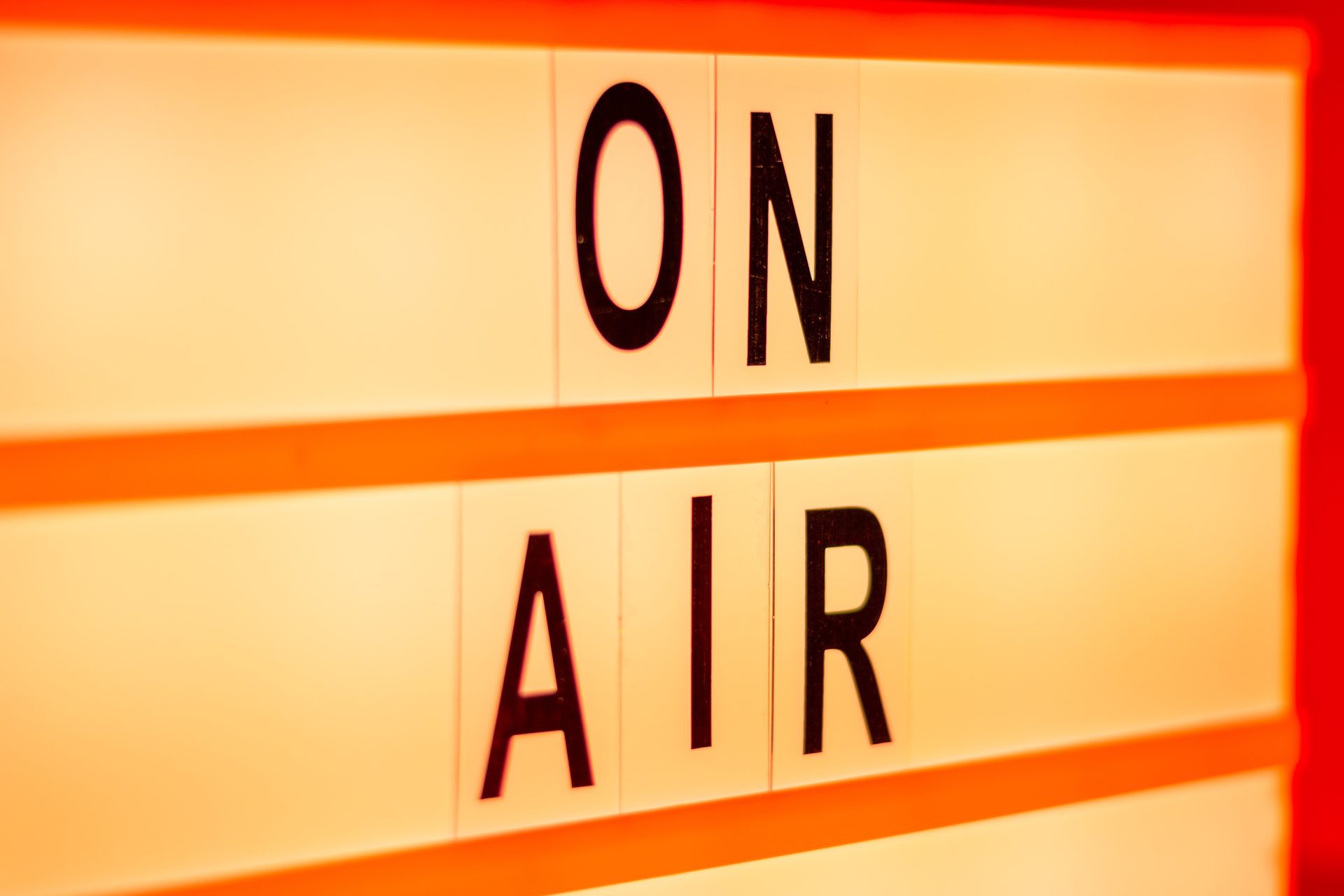Need advice? Let's talk.
Get straightforward guidance from your broadcasting partner. Schedule a call to chat with the team about your radio station.
Book DemoWhy Most Stations Lose Listeners After 10 Minutes (And How to Keep Them)
Excerpt: Losing listeners after 10 minutes? Stop churn with 5 sticky radio engagement strategies, including our secret weapon that helps you keep your audience tuned in.

Beyond "Tuning In": What Really Hooks Listeners
You have ten minutes. That is the average time you get before a listener's hand moves back to the dial, they tune in during their commute or at work and give you a short chance to capture their attention.
If they hear dead air, a boring link, or the same song they just heard, they are gone. This is listener churn. It is the single biggest problem for a growing station and data shows you may have as little as eight seconds to hook a listener before they switch.
Why does it happen? The modern listener is distracted, they are checking emails, navigating traffic, and getting notifications. Their default behaviour is to switch. You are not just competing with other stations, there are also podcasts, streaming playlists, and audiobooks – all of them are one tap away.
Listeners are always asking one question: "What's in it for me?" If you fail to answer that question, you lose them.
You need to give them a reason to stay, your station’s "hook." This hook can be a tease for a song they love, a chance to win a prize, or a topic they want to discuss.
You probably already know the answer for this, the root of the issue is time. You are one person or a small team, spending hours on basic radio show prep. Logging music, checking the weather, writing ad copy, answering emails, updating the website, the list goes on. You have no time left to create the listener engagement foundations that keeps your show "sticky."
This is where you can lose listeners. It’s not because your show is bad, you lose them because you are too busy to create the hooks that will keep them.
5 "Sticky" Ways to Keep Listeners for Longer
1. Give Listeners a Reason to Stay
The ad break is the most common time to lose a listener. You must give them a compelling reason to wait through the commercials. A weak tease like "More great music coming up" will not work. A tease is a promise, it tells the listener that you value their time.
To keep listeners from switching, you must write compelling teases. A good tease poses a question, hints at a reward, or creates an information gap. This is a core part of writing a good radio script, which helps you promote what is coming up next.

There are several types of hooks you should master:
- The Question Hook: This poses a direct question to the listener, making them want to know the answer. "Do you know the number one fire risk in your home? You will be surprised. The Fire Chief is here to explain, right after this."
- The Benefit Hook: This tells the listener what is in it for them. "Want to hear the new Harry Styles song? It's coming up. And, you will want to hear our traffic report before you leave the house."
- The Story Hook: This starts a story but leaves it on a cliffhanger. "In 1985, thieves stole $2 million from the Main Street bank. They were never caught. Today, we reveal a new piece of evidence that was ignored for 40 years. The story is next."
- The Specificity Hook: This uses a concrete detail to build curiosity. "A traffic update that could save you 20 minutes. Stay with us."
Mastering these hooks stops tune-out and shows to your listener that it’s worth waiting.
2. Boost Engagement with Radio Competitions
Listeners are often passive and just consume your content. The next step is to take them from this passive state to one where they are willing to participate. An active listener is a loyal listener. Turning listeners into collaborators with competitions is the best way to do this, but they are hard to invent every day.
You can keep listeners tuning back in by creating compelling competitions. These ideas turn into daily features that listeners will make a priority to tune in. This builds a habit.
Why do they work? Competitions tap into a powerful reward schedule. When a listener knows they have a chance to win at 8:15 AM every day, they build your show into their routine.
- Daily Trivia Jackpots: These build drama. If the caller gets it wrong, the jackpot rolls over. This encourages repeat listening.
- "Finish the Lyric" Contests: These are fast, interactive, and promote artists. They are perfect for a drive-time show.
- "Beat the Intro" Games: Play a song's intro. The first person to call and name the song wins. This rewards your most loyal music fans.
- Weekly "Hometown Hero" Nominations: These build a powerful sense of community. Ask listeners to nominate a local teacher, volunteer, or good neighbor. Read the nominations on-air. This creates positive, shareable content.
How 102.7 KIIS-FM Keeps Their Listeners Engaged

102.7 KIIS-FM in Los Angeles runs a clear and simple competition called Win $1,000 from Ryan Seacrest to Pay Your Bills. The idea is direct, listeners enter online or by phone. The station selects names across the day and people tune in to hear if their name is called.
The station talks about the competition often. Presenters mention it on air, the team posts reminders and quick updates on social media daily. These posts keep the competition visible, and KIIS-FM shows real entries and reactions from the winners, creating a steady attention stream coming from the listeners.
This theme works for sponsorships as it links directly to real costs and brands can add value by funding the prize or offering bill support.
What you can apply to your station:
- Pick a prize that solves a simple real problem for your listeners.
- Promote the competition on air and online throughout the day.
- Use short social posts that push urgency and clarity.
- Share real entries or reactions to show the competition is active.
- Link sponsors to practical outcomes that matter to your audience.
These are not just simple giveaways, they are like ritualistic habits that bind a listener to your station!
3. Keep Listeners with Interactive Segments
You want to take listener calls, but your topic is too broad. "What's on your mind?" gets zero calls. You need specific, emotional, or funny interactive radio ideas that make a listener want to stop and call.
Make your show interactive by generating daily call-in topics that get a response. Choosing the right talk radio topic makes the listener think, "I have a story for that."
When they hear their peers on the air, it builds a powerful community. It validates their own experiences. It becomes "their" station, not just "your" station.
Good topics are specific and emotional. Instead of "What's on your mind?", try these categories:
- Funny Topics: "Commuter Confessions" ("What is the weirdest thing you have seen in another car?"). "Pet Peeves" ("What tiny, irrational thing makes you angry?").
- Debate Topics: "The Unpopular Opinion" ("What popular movie or food do you just not get?"). "Relationship Rules" ("Is it ever okay to check your partner's phone?").
- Heartfelt Topics: "Tell Us Something Good" ("What good news do you have to share today?"). "Who needs a shout-out?" ("Nominate someone who helped you this week.").
These topics work because they are not about facts. They are about opinions and stories. Every listener has one.
4. Extend Engagement to Social Media
A listener heard your "Unpopular Opinion" segment and loved it. But by tomorrow, they have forgotten. You need to reinforce the moment on other platforms to build your brand.
Replicate what works on your station's social media and website. A great on-air moment should be turned into a blog post, a tweet, or a Facebook poll.
You may think that this is just repurposing content, but it is more about building a 360-degree brand, training listeners to follow you everywhere.
If your "Unpopular Opinion" segment gets a huge response, turn it into a poll. Post the poll on Facebook, Instagram or X, for example. You can also read the results on-air the next day, creating a feedback loop. You use social media to fuel your on-air content, and your on-air content to fuel your social media.
This strategy allows listeners to engage on their own time. A listener who cannot call in during their commute can still vote in your poll at lunch, giving them multiple ways to be part of the show.

5. Focus Your Energy on Engagement
Your brain is full of small, routine tasks. When you need to pull the 3-day weather, summarise local events, and check sports scores, your creative energy will be gone by the time you get to the mic.
This is the hidden cost of broadcasting, every time you stop being a host to become a data-entry clerk, you lose a piece of your creative energy. You must offload the routine prep, saving time is always good, but this is about saving mental energy. Being a great radio presenter requires you to be informed and entertaining.
You cannot be a great host if your brain is cluttered with pulling weather forecasts, summarizing council meetings, and checking sports scores. Streamlining this frees your brain and allows you to walk into the studio with one job: connect with your listener.
The Shortcut? Introducing Your Personal Assistant
You cannot run a professional station alone. All five strategies above require time, creativity, energy, and is the work a producer would normally do.
Writing teases, inventing contests, brainstorming topics, repurposing content, and handling prep is a lot. This is where ShowProducer becomes your shortcut. It is the on-tap assistant built to execute all these strategies.
Instead of staring at a blank page, you give ShowProducer a simple prompt. Here are a few examples how ShowProducer can aid you with your radio station listener retention and more:
To write a hook:
- Input: "I'm interviewing the local fire chief in 10 minutes. Write a 10-second question hook."
- Output: "Do you know the number one fire risk in your home? You will be surprised. The Fire Chief is here to explain, right after this."
To create a competition:
- Input: "I need a daily competition idea. The prize is a $100 gift card."
- Output: The assistant suggests the "10-Minute Trivia Jackpot," explaining how to build drama by rolling the prize over each day.
To generate an interactive topic:
- Input: "I need a debate topic for my drive-time show."
- Output: The assistant suggests "The Unpopular Opinion." It drafts a script: "What is a popular movie, song, or food that you just cannot stand? Call us with your 'Unpopular Opinion'. Prepare to defend yourself."
To generate social media:
- Input: "The 'Unpopular Opinion' for today was 'The movie Titanic is boring.' Write a tweet."
- Output: "The listeners have spoken. 'Titanic' was voted the most overrated movie of the 90s on today's show. Do you agree?"
To handle routine prep:
- Input: "Get me the 3-day weather forecast for Chicago, in a broadcast style."
- Output: "Here is your Chicago forecast. Expect sunny skies today with a high of 75. Clear tonight, low of 60. Tomorrow, clouds roll in with a high of 72. There is a 30 percent chance of rain Thursday."
ShowProducer takes the pressure off, it helps you grow listeners and engage with your audience. Learn how using it can give you the time to be an authentic host, check out our video demo below:



